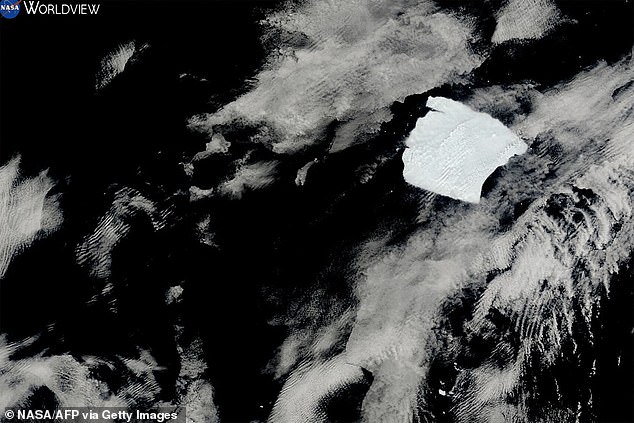
Satellite Imagery Reveals Trillion-Tonne Megaberg Twice London’s Size Disintegrating
World’s Largest Iceberg, A23a, Begins to Crumble as It Drifts Toward Wildlife Habitat
The colossal iceberg A23a, once twice the size of Greater London (607 sq mi), is showing signs of breaking apart as it moves north through the South Atlantic. Satellite images reveal an 80 sq km (31 sq mi) chunk has broken off the 3,360 sq km (1,297 sq mi) megaberg, raising questions about its stability.

Satellite image shows A23a’s intact structure before the recent split (January 2025).
A Trillion-Tonne Threat
Weighing nearly one trillion tonnes—100 million times heavier than the Eiffel Tower—A23a is speeding toward South Georgia at 30 miles per day. Experts warn it could disrupt ecosystems on the remote British island, a critical feeding ground for seals and penguins. If the iceberg grounds nearby, it might block access to food, risking starvation for vulnerable wildlife.
British Antarctic Survey (BAS) oceanographer Andrew Meijers describes A23a as a “huge Game of Thrones-style wall of ice.” He notes that while smaller icebergs disintegrate faster, A23a’s fate remains uncertain: “It’s hard to say if this is a loose tooth or the start of total collapse.”
A Decades-Long Journey
A23a calved from Antarctica’s Filchner Ice Shelf in 1986 but remained grounded in the Weddell Sea for over 30 years. In 2020, it began drifting, propelled by the Antarctic Circumpolar Current. Its recent acceleration has been punctuated by dramatic spins and pauses.

A23a’s trajectory since 2020; its course depends on ocean currents.
Cracking Under Pressure
Warmer waters and waves are eroding A23a, creating towering arches and caves. Erosion below the surface—where 90% of the iceberg’s mass lies—accelerates fragmentation. “Waves crash against it like coastal cliffs, carving gaps until sections collapse,” Meijers explains.
In January 2024, the EYOS Expeditions team captured drone footage of the iceberg’s sheer scale. Videographer Richard Sidey called it “mind-bogglingly big,” stretching endlessly in all directions.

Drone footage reveals A23a’s vast expanse during a 2024 expedition.
Environmental Impact
Past mega-icebergs, like A76 (which detached in 2021), fragmented long before reaching South Georgia. Scientists hope A23a will follow suit, reducing risks to wildlife. However, its sheer size raises concerns. If intact upon arrival, it could devastate local penguin and seal populations by blocking foraging routes.
Fate Uncertain
Glaciologist Soledad Tiranti notes the iceberg’s path remains unpredictable, hinging on currents. While the recent breakoff hasn’t altered its course, further splits might scatter smaller, less hazardous pieces.
A23a has already lost over half its original 1,540 sq mi area as it drifts toward eventual oblivion. Yet its legacy—as both a marvel of nature and a climate warning—will endure long after it melts.

Erosion carves dramatic formations into A23a’s edges as it weakens.
Though briefly holding the title of world’s largest iceberg, A23a’s days are numbered. Its journey underscores the dynamic—and fragile—relationship between polar ice and ocean ecosystems.


